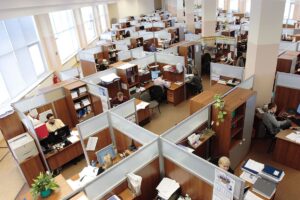You just got a job in your dream field. Go you!
You love the work you’re doing, but because you’re a new employee you share your cramped office with two or three other people.
You have high aspirations, but the clicking of other people’s keyboards and the lack of personal workspace have you constantly distracted. Sometimes colleagues pop in to talk to your coworkers. Right when you start to focus, you lose your train of thought. Thanks, Daryl from accounting.
There are no windows in your office and the best view you have is the papers scattered about. The flickering, blinding fluorescent white light above you hurts your eyes.
You know you can work more efficiently, so you start to blame yourself. Is it your fault that you can’t just do your work wherever you are?
Creating Healthy Work Environments
We all have physical and psychological and environmental needs, and when these aren’t being met, it’s difficult to concentrate or feel well.
Architecture firms and interior designers are catching on to the idea that natural elements in a workplace can work wonders for the well-being of office workers. In a groundbreaking multidisciplinary study done by CBRE Netherlands Healthy Offices Research, researchers spent seven months tracking the importance of natural space, the right lighting, healthy nutrition, mental balance, and physical exercise in the office. The increases in performance, energy, happiness, and health were stunning.
“People function and perform significantly better in a healthy work environment. It also makes people more aware of their health and it inspires them to live healthier at home.” ~ CBRE Netherland, Healthy Offices Study
Here are the numbers:
Natural Space (more plants on the work floor)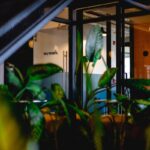
- +10% improved performance based on objective experiment
- +10% improved performance based on interviews
- 76% of participants felt more energized
- 78% of participants felt happier
- 65% of participants felt healthier
Right Lighting (circadian lighting)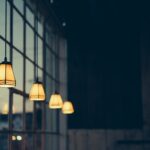
- +12% improved performance based on objective experiment
- +18% improved performance based on interviews
- 71% of participants felt more energized
- 76% of participants felt happier
- 50% of participants felt
Healthy Nutrition (healthy alternatives to sugar and caffeine)
- +45% improved performance based on objective experiment
- +20% improved performance based on interviews
- 78% of participants felt more energized
- 66% of participants felt happier
- 52% of participants felt healthier
Mental Balance (meditation, yoga, power naps, and massages at work)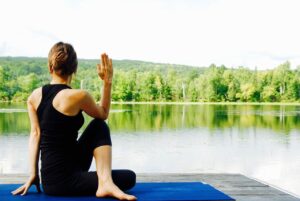
- +30% improved performance based on objective experiment
- +16% improved performance based on interviews
- 66% of participants felt more energized
- 63% of participants felt happier
- 53% of participants felt healthier
Physical Exercise (less sitting down)
- +12% improved performance based on objective experiment
- +11% improved performance based on interviews
- 65% of participants felt more energized
- 36% of participants felt happier
- 71% of participants felt healthier
A Healthy Office in Practice: Pasona Urban Farm
An example of a healthy office in real life is the Pasona Urban Farm by KONODESIGN. While this location is no longer open, it is a striking example of an innovation in biophilic design intertwined in corporate culture, revamping the workplace.
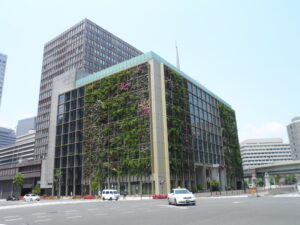 Pasona, a recruiting company in Tokyo, renovated the 50 year old building to include an urban farm and rooftop garden to provide a better workspace for its employees and to gain public engagement. Pasona HQ featured a double skinned green facade, offices, an auditorium, cafeterias, a rooftop garden, and urban farming facilities integrated within the building, measuring in at 9 stories and 215,000 square feet.
Pasona, a recruiting company in Tokyo, renovated the 50 year old building to include an urban farm and rooftop garden to provide a better workspace for its employees and to gain public engagement. Pasona HQ featured a double skinned green facade, offices, an auditorium, cafeterias, a rooftop garden, and urban farming facilities integrated within the building, measuring in at 9 stories and 215,000 square feet.
The urban farm and rooftop garden totaled over 43,000 square feet and had 200 different species of fruits, vegetables, and rice that were harvested and served to the employees in the HQ cafeteria. It was the largest farm-to table office operation ever in Japan.
Employees were encouraged to help with cultivation of the crops that were later served the in the cafeteria. They could do everything from working in the rice paddy to pruning fruit trees to harvesting vegetables. Foods produced on site eliminated fuel waste during transport and maintained their nutritional value.
One other rare and practical feature were the balconies that provided shade and fresh air for the employees. The windows were operable, unlike in most mid-rise buildings, and the balconies sprawled with greenery attached to a deep grid of fins that provided depth and structure for the organic green wall. The wall grew seasonal flowers and orange trees.
Pasona Urban Farm is an example of creative architecture driven by the idea that humans are a part of nature and benefit from the physical connection to it.
What Can We Do In Quarantine to Improve Our Spaces?
We might not all have a carefully designed eco-office, but as more and more of us work, study, and spend more time at home in response to COVID-19 pandemic, the CBRE’s “Heathy Offices Research” and the example of Pasona Urban Farm remind us how our health and wellbeing can be shaped by the basic elements of our space and how we interact with them.
Working, sleeping, eating, and virtually socializing out of the same one bedroom has prompted me to make sure I have natural lighting by opening the blinds, incorporating some plants, eating a healthy diet and moving daily so I feel and work my best. I even purchased a cheap desk fountain so I can listen to the sounds of water.
These are all simple steps I recommend for others as well.
How can you invest in your space (even in small ways) that will help you invest in your health?
___
Photo credits: office cubicles (on Pxhere), office plants (Dan Gold, on Pexels), office lighting (by Robert Haverly on Unsplash), greens (on Pxhere), yoga ( by evita-ochel on Pixabay), standing desk (by kennyrhoads on Wikimedia Commons), Pasona Urban Farm (by 钉钉, on Wikimedia Commons).


